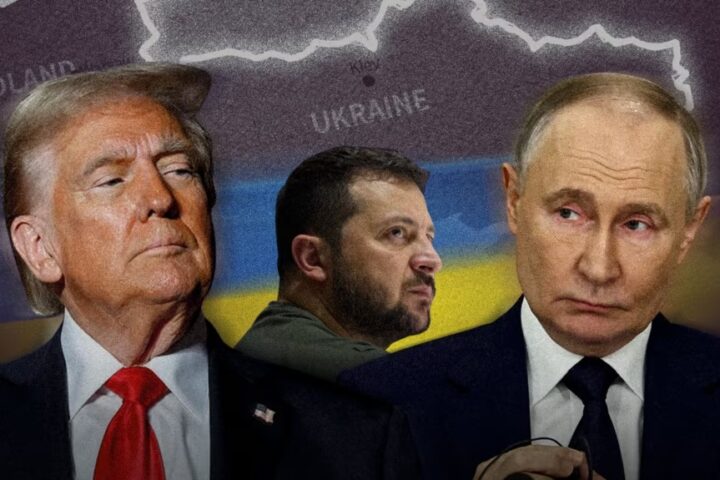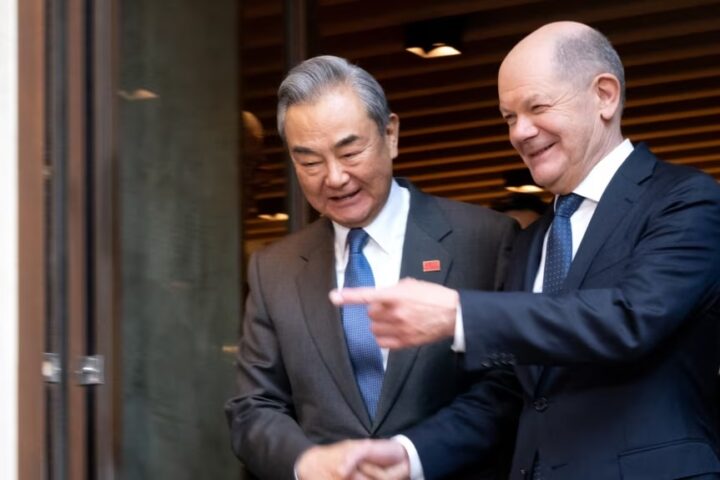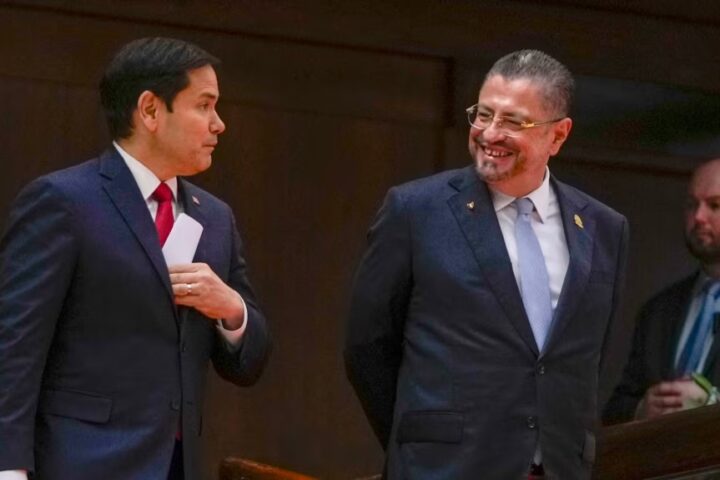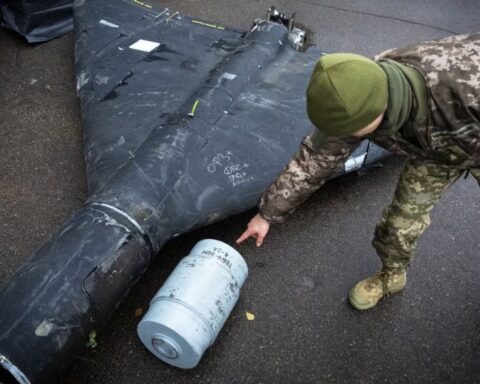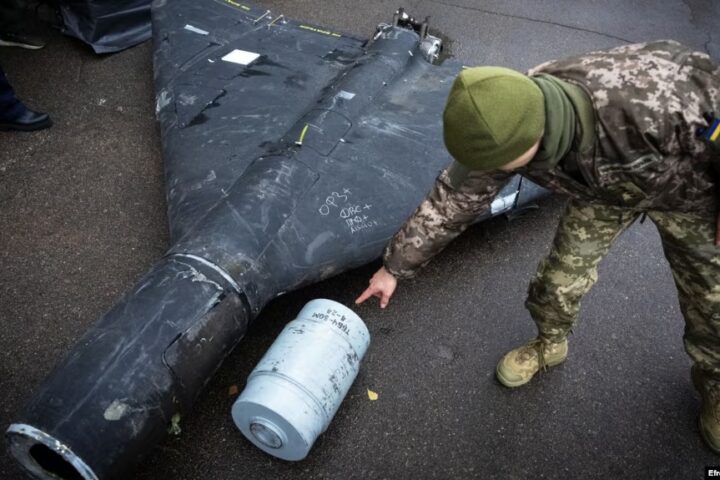WASHINGTON — The top U.S. and Russian defense officials spoke by phone for the first time in months Friday, as Russian officials indicated a new openness to possible negotiations and as Ukrainian forces edged closer to the Russian-occupied southern port city of Kherson.
The United States and Russia both issued readouts of the call between U.S. Defense Secretary Lloyd Austin and Russian Defense Minister Sergey Shoygu, agreeing the focus of the conversation was the war in Ukraine.
According to the Pentagon readout, Austin “emphasized the importance of maintaining lines of communication amid the ongoing war against Ukraine.”
A Kremlin readout noted the two officials “discussed international security problems, notably the situation in Ukraine.”
Prior to Friday’s call, the last time Austin and Shoygu spoke was May 13, when the U.S. defense secretary called for an immediate cease-fire in Ukraine.
The latest conversation came as the Kremlin appeared eager to signal it was open to talks.
Spokesman Dmitry Peskov told reporters Friday that Russian President Vladimir Putin had been open to negotiations from “the very beginning.”
Putin “tried to initiate talks with both NATO and the United States even before the special military operation,” Peskov added, using the Russian term for its war in Ukraine.
Earlier Friday, Turkish President Recep Tayyip Erdogan also appeared to raise hopes for talks, saying Putin now appeared to be “much softer and more open to negotiations.”
U.S. and NATO officials have said repeatedly that the quickest way for Putin to end the fighting would be for him to pull Russian forces from Ukraine, something the Russian leader has refused to do.
Western officials have likewise said the terms for any settlement would have to be agreed upon by Ukraine, which has vowed to retake all territories currently occupied by Russia, including Crimea, which was seized by Russia in 2014.
Despite the apparent Russian overtures, Moscow has consistently refused to negotiate the return of four Ukrainian regions that it annexed last month.
Ukrainian President Volodymyr Zelenskyy has also ruled out any talks with Moscow as long as Putin remains in power.
U.S. Secretary of State Antony Blinken said Friday that there was no indication Putin wants to engage in meaningful diplomacy.
He said at a press conference in Washington with his French counterpart, Catherine Colonna, “Every indication is that, far from being willing to engage in meaningful diplomacy, President Putin continues to push in the opposite direction.”
In the meantime, Ukrainian forces Friday continued to press their advantage against Russian forces in the Kherson region, targeting Russian resupply routes across the Dnieper River.
A spokesperson for Ukraine’s southern operational command said its forces struck a key bridge late Thursday, as well as a number of ferry crossings and pontoon bridges being used by Russia to supply its forces in Kherson.
Russia accused Ukraine on Friday of killing at least four civilians during an attack at a ferry crossing in the region. Ukraine said it had fired in the area but only during curfew hours when civilians were not supposed to be out.
An official with Kherson’s Moscow-installed regional administration, Kirill Stremousov, said in a video he posted on Telegram: “Today we are preparing the city of Kherson as a fortress for defense and are ready to defend to the last.”

Dam at risk
Zelenskyy on Thursday night said Russia was preparing to blow up a key dam in the Kherson region.
In a televised address, he accused Russia of mining the Nova Kakhovka dam. Destroying the dam would flood the Dnieper River and halt the advance of Ukrainian troops.
“Now everyone in the world must act powerfully and quickly to prevent a new Russian terrorist attack. Destroying the dam would mean a large-scale disaster,” he warned.
His ambassador at the United Nations, Sergiy Kyslytsya, told a meeting of the Security Council on Friday that the plant holds about 18 million cubic meters of water.
“If Russian terrorists blow up this dam, more than 80 settlements including Kherson, with hundreds of thousands of people living there, will be in an area of rapid flooding,” he warned. He said it could also cut off the supply of water that cools the Zaporizhzhia nuclear power plant, which comes from the Kakhovka’s reservoir.
Kyslytsya called for an international observer mission to be sent to the Kakhovka facility. He said it was also necessary that the Ukrainian personnel be able to return, and that the dam and its surroundings are professionally demined.
Russia’s envoy accused Ukraine of targeting the dam with American-supplied HIMARS rockets. Vassily Nebenzia told the council he had sent a letter to the United Nations calling on it to “prevent this horrendous provocation.”
Iranian drone allegations
Also Friday, France, Germany and Britain called for the U.N. to investigate allegations that Russia is using Iranian drones for attacks in Ukraine.
A letter from the French, German and British missions to the U.N. cited “significant open-source evidence, including photographs and video, of Russia deploying Mohajer and Shahed series UAVs [unmanned aerial vehicles] in Ukraine.”
They argued that the transfer of such weapons violated U.N. Security Council Resolution 2231, which allows transfers of restricted items to or from Iran only when approved on a case-by-case basis by the Security Council. No such approval has been sought.
“The intent behind these attacks is clear,” British Deputy Ambassador James Kariuki told the council. “Russia is seeking to subjugate Ukraine by terrorizing civilians, and it is doing it by using weaponry obtained from Tehran in violation of Resolution 2231.”
Iran has categorically rejected the allegations, calling them part of a disinformation campaign against it, while Russia says it manufactured the drones.
Russian envoy Nebenzia threatened to “reconsider our entire package of cooperation” with the U.N. secretariat if it carried out an investigation.
VOA’s Margaret Besheer contributed to this report from the U.N. VOA’s Carla Babb contributed from the Pentagon. Some information came from The Associated Press, Agence France-Presse and Reuters.




